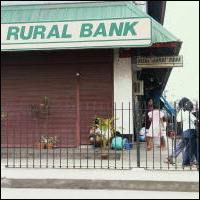 | « Back to article | Print this article |
Rural banking got a new lease of life in the year 2005-06 when the Regulator announced policy on Financial Inclusion through Business Correspondent (BC) model. This was followed by the guidelines to expand the banking outreach through BC model with ICT support by the Khan Committee. It marked the beginning of new era in Indian banking especially, rural banking.
 Since then approximately 70 million of the un-served / under-served population (FINO alone accounts for around 45 Million, March 2012) across the country have got access to No Frills Account (NFA) along with a range of products and services. However, a greater push is required to drive total financial inclusion, starting with financial literacy programs.
Since then approximately 70 million of the un-served / under-served population (FINO alone accounts for around 45 Million, March 2012) across the country have got access to No Frills Account (NFA) along with a range of products and services. However, a greater push is required to drive total financial inclusion, starting with financial literacy programs.
Financial Inclusion is broadly defined as reach of banking services to the un-served/ under served, presence of infrastructure (brick and mortar) and availability of NFA followed by financial products and services.
Given the huge potential, we at FINO believe that BC as an alternate channel to the bank branch led model has to be given its own place in the sun. The scale the BC industry has achieved thus far is of paramount significance & impact both at macro and micro level economics of the rural poor & those at the bottom of the pyramid (BoP). Whilst this achievement has surpassed the expectation of its formulators, the following need attention for BC model to evolve as the most effective delivery model for financial inclusion:
1.Clarity on the guiding principles & models to serve financially included customers with a bouquet of products & services
2.Treating Financial Inclusion as a business case opportunity & design products to ensure profitability for Govt, banks and BCs; not to forget the immense benefit to the end beneficiaries.
3.Remuneration to the Business Correspondent Channel to bring sustainability and scalability in the model, especially for Government's EBT business where volumes cost are huge
4.Adequate measures to cover associated risks & ownership thereby safeguarding the interests of all stakeholders.
5.Focus on Financial Literacy programs - educate and generate interest in financial products and services among the target group. NABARD's twin funds (Financial Inclusion Fund & Financial Inclusion Technology Fund) can be used more effectively
6.Financial Inclusion Technology and products (biometric machines, smart cards, mini ATMs etc) involve significant cost. Government support on technology innovation directly to BCs would help meet Financial Inclusion objective
These issues if addressed will certainly help us unleash the fortune at the bottom on the pyramid in nation building avenues.